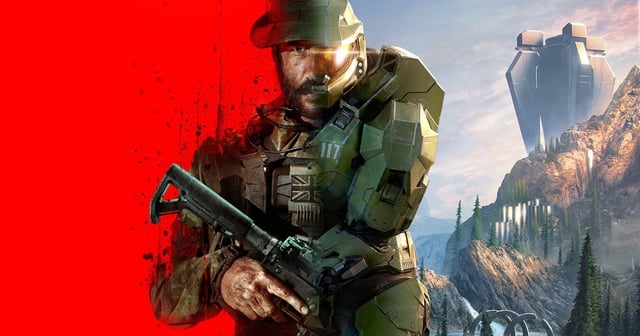The Callisto Protocol's Fallout: What the Striking Distance Layoffs Mean for You The news rippled through the game development community like a shockwave: Striking Distance Studios, the team behind The Callisto Protocol, had announced significant layoffs.

The news rippled through the game development community like a shockwave: Striking Distance Studios, the team behind The Callisto Protocol, had announced significant layoffs. As a recruiter with over a decade in this industry – from the trenches of AAA behemoths to the scrappy innovation of indie shops – I’ve seen this story play out before. And while every situation is unique, the anxieties and questions this event raises are universal for those working in, or aspiring to work in, game development. This isn't just about numbers; it's about people, careers, and the perceived stability of an industry we're all passionate about. So, let's unpack what happened, what it means, and what you can do about it.
An empty desk symbolizes the sudden displacement many developers are now facing.
The Business Reality: The Callisto Protocol's Sales and the Layoffs
Let's address the elephant in the room: The Callisto Protocol's sales. While I won't delve into sensationalism or blame games, it’s crucial to acknowledge the business realities. The game, while visually stunning and ambitious, didn’t hit the sales targets expected, especially considering its hefty budget and marketing push. AAA game development is a high-stakes gamble. When a project doesn't deliver the expected return, studios often have to make tough decisions, and unfortunately, layoffs are frequently a part of that equation. This isn't an indictment of the game or the team's talent; it's simply the harsh reality of the industry's financial model. The Callisto Protocol Impact definitely played a significant role in this situation.
Skill Sets Affected: Where Did the Axe Fall?
Unfortunately, details about the specific roles affected by the Striking Distance Studios Layoffs are scarce. However, based on past trends and industry knowledge, we can infer some likely scenarios. Typically, after a game ships, studios will reduce headcount in areas that are no longer critical for post-launch support. This often includes:
- QA Testers: These roles are frequently project-based and see reductions after launch.
- Certain Art Roles: While some artists are needed for DLC or ongoing content, large-scale environment art or character modeling teams may be downsized.
- Production Staff: Project managers and producers are often tied to specific projects, so their roles can be impacted.
- Some Programming Positions: Similar to art, programming roles tied to core game features may be reduced if no major new features are planned.
- Level Designers: If the plan is no new levels, then they become redundant.
If you're a developer affected by the layoffs, now is the time to assess your skills and highlight your versatility. Can you leverage your environment art skills for asset creation? Can your programming experience be applied to engine optimization or tool development? The broader your skillset, the more marketable you become. This is particularly critical for displaced talent to understand their marketability.
Company Culture: The Ripple Effect of Layoffs
Layoffs of this scale inevitably damage a studio's culture. Fear and uncertainty creep in, trust erodes, and morale plummets. It becomes harder to attract top talent when your studio is perceived as unstable. Does Striking Distance still seem like a place developers would want to work? That's a question they'll need to address head-on to rebuild trust and attract future talent. Transparency, open communication, and demonstrating a commitment to the remaining team are crucial steps in mitigating the damage.
 This image represents developers moving on to new opportunities after the layoffs.
This image represents developers moving on to new opportunities after the layoffs.
Where to Land: Alternative Studio Recommendations
For those displaced by the layoffs, here are a few specific alternative PC game studios that might be a good fit, based on the skills and experience gained at Striking Distance:
- Santa Monica Studio (God of War): Located in Los Angeles, like Striking Distance, they are known for their high production values and cinematic storytelling. With God of War Ragnarok now out, they're likely ramping up for their next big project. Keep an eye out for openings in art, animation, and programming.
- Naughty Dog (The Last of Us, Uncharted): Another powerhouse in the AAA space, also located in Southern California. Their focus on character-driven narratives and cutting-edge technology makes them a desirable destination for talented developers. Look for roles in narrative design, character art, and AI programming.
- Obsidian Entertainment (The Outer Worlds, Fallout: New Vegas): While technically owned by Microsoft, Obsidian maintains a distinct identity and continues to create engaging RPGs. Located in Irvine, CA, they often have openings for designers, writers, and programmers with a passion for world-building and player choice.
Remember to tailor your resume and portfolio to highlight the specific skills and experience that align with each studio's projects and culture. Senior Game Designer Jobs and Game Programmer Positions are frequently available at these studios.
AAA vs. Indie: Weighing Your Options
The appeal of AAA studios lies in their resources, established pipelines, and the opportunity to work on high-profile projects. You'll likely have access to cutting-edge technology and collaborate with some of the best talent in the industry. However, AAA development can also be more rigid, with longer development cycles and less creative freedom.
Indie studios, on the other hand, offer more autonomy, creative control, and the chance to make a bigger impact on a smaller team. The downside is often lower pay, less job security, and the need to wear multiple hats.
Ultimately, the best choice depends on your individual priorities and career goals. If you value stability and prestige, AAA might be the better fit. If you're willing to take risks for creative fulfillment, indie could be the way to go.
 The contrast between AAA and Indie development is visually represented here.
The contrast between AAA and Indie development is visually represented here.
Echoes of Telltale: Learning from the Past
The Striking Distance layoffs inevitably draw comparisons to the closure of Telltale Games. Both events sent shockwaves through the industry and left talented developers scrambling for work. However, there are key differences. Telltale's closure was a complete shutdown, while Striking Distance is restructuring. The industry also seems more aware and supportive this time around, with many studios actively reaching out to offer assistance.
The talent dispersed from Telltale Games went on to find success in various studios, both AAA and indie. Many formed their own companies, bringing fresh perspectives and innovative ideas to the industry. The same will likely happen with the developers from Striking Distance.
 Visual representation of developers branching out into new career paths.
Visual representation of developers branching out into new career paths.
The Future of AAA Game Development: A Cautionary Tale?
Do these layoffs signal a broader trend in AAA game development? It's hard to say definitively, but it does highlight the increasing pressure on studios to deliver blockbuster hits. The rising costs of development, coupled with the growing expectations of players, create a challenging environment.
However, the game industry is resilient and constantly evolving. New technologies, business models, and creative approaches are emerging all the time. While there will inevitably be ups and downs, the demand for talented game developers will remain strong. These developers will likely find work, but might need to be open to roles in different companies or on new types of projects. AAA Game Development Job Security is something many are concerned about.
Building Your Ark: Preparing for the Inevitable Storm
So, what can you do to protect yourself in this volatile industry? Here’s some advice from someone who’s been on both sides of the table:
- Diversify Your Skills: Don't be a one-trick pony. Learn new tools, explore different disciplines, and become a versatile asset to any team.
- Build Your Network: Connect with other developers, attend industry events, and build relationships. Your network is your safety net.
- Keep Your Portfolio Updated: Showcase your best work and highlight your achievements. A strong portfolio is your calling card.
- Stay Informed: Keep up with industry trends, learn about new technologies, and understand the business side of game development.
- Be Adaptable: Be willing to learn new things, take on new challenges, and adapt to changing circumstances.
 This image emphasizes the value of having a diverse skill set in the industry.
This image emphasizes the value of having a diverse skill set in the industry.
Conclusion: Navigating the Uncertain Landscape
The layoffs at Striking Distance Studios are a stark reminder of the risks and uncertainties inherent in AAA game development. But they're also an opportunity for talented developers to showcase their skills, explore new paths, and contribute to the ever-evolving landscape of the industry. By staying adaptable, building your network, and diversifying your skills, you can navigate this uncertain landscape and build a successful career in game development. The Game Development Job Search can be daunting, but with the right preparation and mindset, it can also be incredibly rewarding.
 Symbolic image of hope and new beginnings.
Symbolic image of hope and new beginnings.
 Image highlighting the passion driving game development.
Image highlighting the passion driving game development.
 Teamwork and collaboration are key in game development.
Teamwork and collaboration are key in game development.
 Networking at industry events is crucial.
Networking at industry events is crucial.